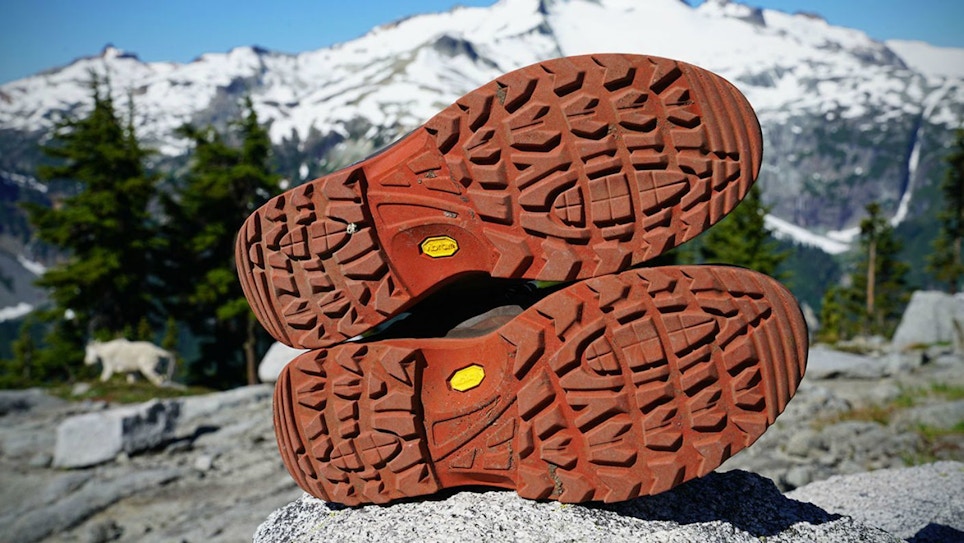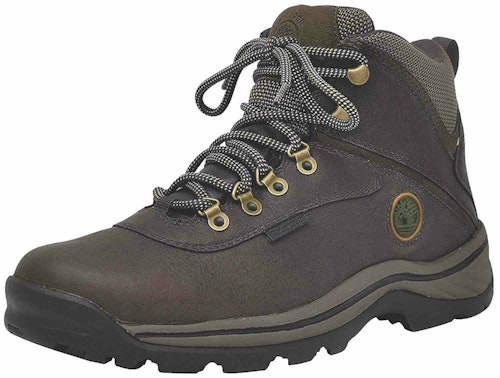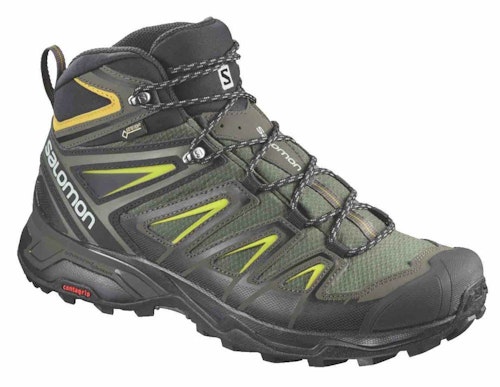While a comparison of hiking boots might sound somewhat out of place in a magazine for hunting retailers, the simple fact is a lot of hiking occurs during hunts of many types. In fact, for a typical upland bird hunt, way more hiking occurs than actual shooting of birds.
Also, those retailers who cater to hunters can increase their boot sales by offering boots to non-hunting hikers, a large market segment they might be overlooking. A recent report by the Adventure Travel Trade Association listed hiking as the most popular activity among adventure travelers. In fact, hiking jumped ahead of several adventure activities that had been more popular just 10 years earlier, including rock and mountain climbing, rafting, trekking, sea and whitewater kayaking and canoeing.
Equally impressive, the Outdoor Foundation’s 2018 Outdoor Participation Report found that hiking is now the fourth most-popular outdoor activity in the United States — right behind running, fishing and biking. Consequently, hiking boots represent a very lucrative profit center.
Before we look at a few boots, let’s first explore some Hiking Boot 101-type information. Footwear in this category is generally made of textile with leather, suede or synthetic reinforcements that provide a support structure and add abrasion resistance. Hiking shoes are also popular, but we won’t be looking at them in this review.
Several parts of these specialized boots combine to make them the outstanding specialized tools they are. From the bottom to the top, the outsole is nearly always made of rubber. The main feature of the outsole is the lugs — the protrusions built into the rubber to give the wearer traction in less-than-optimum walking conditions.
The internal support of a hiking boot is critical for effectiveness and longevity. Shanks are placed between the outsole and insole for load-bearing stiffness and support. The midsole is what provides cushioning and makes a boot comfortable to wear on long hunts or hikes. Many midsoles are made of ethyl vinyl acetate (EVA) of varying densities, depending on the cushioning desired.
Lastly, the boot’s upper is where you’ll see the most difference. They range from synthetics like polyester and nylon, to nubuck leather, to split- and full-grain leather, along with combinations of those materials. The materials used in building an upper make a difference in weight, durability and other factors.
Now, let’s take a look at three quality lightweight hiking boots in different price ranges. All would make great boots for hunters and hikers, along with great additions to your footwear inventory.
Timberland Men’s White Ledge Mid Waterproof
Starting with a boot that can be found for well under $100 online and at some stores, the White Ledge is considered by many to be one of the best hiking/hunting boots for this price level. With a history of more than 50 years in the boot-making business, New England-based Timberland knows how to make a good pair of boots at a decent price.
Trail- and field-ready right out of the box, the no-frills White Ledge is obviously a budget boot based on the price. But it is one of the best quality boots in the under-$100 price range. The White Ledge has uppers constructed of leather for both comfort and durability. Interestingly, with its seam-sealed construction, even though the boot has no waterproof membrane in the lining, users report it will still keep feet dry when hunting or hiking in wet morning dew.
At about 1.2 pounds per boot, the pair comes in at 2.5 pounds, placing them in about the middle of the pack for sub-$100 offerings. The wide rubber outsoles are sufficiently lugged and have been touted by most reviewers to give ample grip in challenging ground conditions.
The White Ledge features thick padding around the ankle, making it comfortable to wear for long stretches of time. And with two upper and four lower rustproof speed-lace eyelets per boot, wearers can snug the boots to their feet quite well without having to worry about laces working loose.
Salomon X Ultra 3 Mid GTX
Jumping up to boots in the $100 to $200 range, the Salomon X Ultra 3 Mid GTX is one of the tops in that price range — or any price range, for that matter. Salomon has been making great hiking boots for 30 years, and its lightweight offerings are perfect for those hunters who walk long distances in their hunting endeavors. The company has pretty much perfected building boots that stand up to abuse on the trail, hence the tremendous following that Salomon enjoys.
Salomon boasts that the Ultra 3 “Brings running-shoe comfort to technical hikes, with sculpted linings and contoured heel cups that cradle your feet and minimize slippage during grueling uphills and epic descents.” For those who will be putting in a lot of steps, this boot really shines in the weight category. At just under 2 pounds for the pair, the Ultra 3 really cuts the amount of weight you’ll be dragging around on a long day of upland bird hunting or spot-and-stalk big-game hunting.
The boot’s leather upper is made to last, while the Gore-Tex waterproof bootie liners allow the wearer’s feet to breathe while also protecting them from the elements. At the same time, the Ultra 3’s Ortholite sockliners combine a specific Ortholite foam and contoured EVA heel cups for enhanced heel support.
On the outsoles, the Ultra 3 features a unique pattern combining two types of rubber for gripping the terrain more aggressively. Mud guards and integrated rubber toe caps provide durable protection from roots and rocks. The boot is available for about $165.
Lowa Renegade GTX Mid
Jumping up to boots in the over-$200 category, we find an excellent boot in the Lowa Renegade GTX Mid. In the $250 range from most retailers, the Lowa exudes quality while also looking like a million bucks.
Slightly heavier (2.5 pounds for the pair) than the Salomon, the Lowa is also a tougher, better-made boot that can take high miles and rough terrain in stride. Whether the difference in the two is worth an extra $100 at the outset is completely up to the customer and his or her needs and budget.
The Renegade is Lowa’s signature boot model, and it’s not hard to see why. Comfortable and supportive, it is available in a wider range of sizes than many of its competitors, making it perfect for those who have hard-to-fit feet. Lowa’s lightweight Vibram outsoles have a unique look — they’re not as deeply lugged as some of the aforementioned choices, but they still do the job in rugged, treacherous terrain.
Those needing a waterproof boot that won’t let them down should also give the Renegade GTX a look. The all-leather uppers are treated with a water-repellant coating, and the interior of the boot features a Gore-Tex lining, which waterproofs the boot and also provides good breathability.
Last but not least, the Renegade GTX gets high marks in comfort by most who have worn the boot extensively. The boots’ full-length nylon shanks offer great support for long days on your feet, while the padded and gusseted tongues relieve lace pressure and keep out debris.









